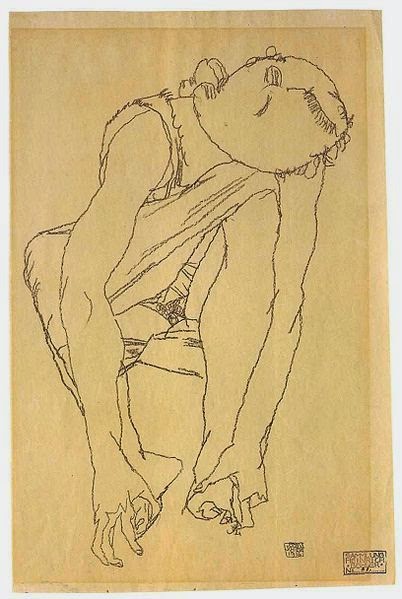After watching the Egyptians let us move into our present Modern with Gustav Klimt and Egon Schiele
Contributions by Alessandra Comini, James T. Demetrion, Johannes Dobai, and Thomas M. MesserPublished in 1965
124 pages
Softcover
 This publication brings together the work of two Austrian
artists—Gustav Klimt and his former student Egon Schiele. Although
independent in their style and depiction of their subject, common
threads are manifest in the oeuvre of both artists. The two share a
certain anxiety and preoccupation with the erotic, yet stylistically
Klimt's work is formally ordered and decorative while Schiele's work is
unforgiving in its brutality. This exhibition focuses specifically on
the output produced late within Klimt's career, while approaching
Schiele's work from a retrospective standpoint. The catalogue discusses
each artist separately and includes a chronology, essay, and an
illustrated exhibition checklist, providing an engrossing insight into
the work of two distinctive artists who can be credited with catalyzing
the transition from Art Nouveau to Expressionism. When considered
together the vibrancy and singularity of each body of work is made
evident.
This publication brings together the work of two Austrian
artists—Gustav Klimt and his former student Egon Schiele. Although
independent in their style and depiction of their subject, common
threads are manifest in the oeuvre of both artists. The two share a
certain anxiety and preoccupation with the erotic, yet stylistically
Klimt's work is formally ordered and decorative while Schiele's work is
unforgiving in its brutality. This exhibition focuses specifically on
the output produced late within Klimt's career, while approaching
Schiele's work from a retrospective standpoint. The catalogue discusses
each artist separately and includes a chronology, essay, and an
illustrated exhibition checklist, providing an engrossing insight into
the work of two distinctive artists who can be credited with catalyzing
the transition from Art Nouveau to Expressionism. When considered
together the vibrancy and singularity of each body of work is made
evident.
Excerpt
 Where Klimt is ornamentally decorous, Schiele is often
indecorously expressive. Klimt's meticulously structured mosaic
compositions are opposite in concept and execution from Schiele's sure
and daring linear scheme, as are Klimt's subtly balanced tonal effects
when seen in juxtaposition with Schiele's fauve and eventually
expressionist use of color. Klimt strives through formal means to attain
an order that, not unlike Mondrian's, reduces spontaneous and
individual components to a collective validity. Schiele, in contrast
more like Klee, transcribes highly personal insights which then assume
the power of evoking common experiences. Above all, Klimt, despite his
current relevance to modern art, must be seen as a late exponent of an
historic style, whereas Schiele raises to the most intense pitch the
newly acquired awareness of 20th century man. Together, Klimt and
Schiele signify an end and a beginning, and at one poignant moment their
adjoining forms point simultaneously backward and forward to comprise
the past and future in a fleeting present.
Where Klimt is ornamentally decorous, Schiele is often
indecorously expressive. Klimt's meticulously structured mosaic
compositions are opposite in concept and execution from Schiele's sure
and daring linear scheme, as are Klimt's subtly balanced tonal effects
when seen in juxtaposition with Schiele's fauve and eventually
expressionist use of color. Klimt strives through formal means to attain
an order that, not unlike Mondrian's, reduces spontaneous and
individual components to a collective validity. Schiele, in contrast
more like Klee, transcribes highly personal insights which then assume
the power of evoking common experiences. Above all, Klimt, despite his
current relevance to modern art, must be seen as a late exponent of an
historic style, whereas Schiele raises to the most intense pitch the
newly acquired awareness of 20th century man. Together, Klimt and
Schiele signify an end and a beginning, and at one poignant moment their
adjoining forms point simultaneously backward and forward to comprise
the past and future in a fleeting present.This is the documentary about the first for The Lady in Gold - An Austrian National Treasure - Stolen by the Nazis.























_-_Google_Art_Project.jpg)








No comments:
Post a Comment